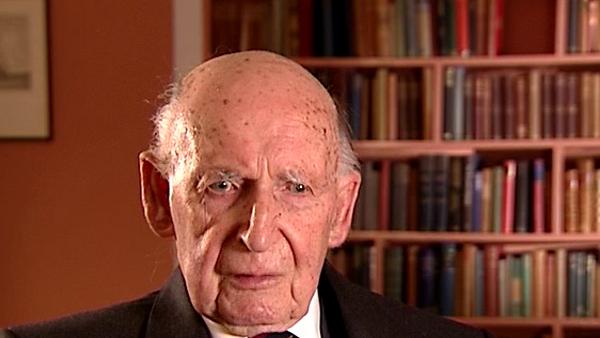NEXT STORY

Patrick Blackett's contribution to building a new aerial
RELATED STORIES

NEXT STORY

Patrick Blackett's contribution to building a new aerial
RELATED STORIES



When I realised the consequences of the letter from Eckersley to Blackett, that we had absolutely no hope at all of detecting the ionisation from the cosmic ray air showers with the equipment, which we had... And we had to make an enormous improvement in its sensitivity before we had any hope of doing so. I did quite a lot of calculations; I can't remember what happened to them, they may or may not be in the archives, because the answers depended on the nature of the distribution of the electrons in the air showers, and I consulted with Jånossy, who was just in the middle of writing a very detailed book on the theory of cosmic rays, and the answer depended, amongst other things, on a great deal as to how spread out the showers were, and so on. But in any case, even in the most optimistic case, we had to make an improvement of a very great order in the sensitivity of our equipment.
Now, there are three possible ways of doing this. One can either get a much more powerful transmitter, one can either improve the receiver sensitivity, or one can build a bigger aerial. Well, in the first case, we had absolutely no means, or money, of getting a more powerful transmitter. In the second case, improving the sensitivity of the receiver... This was... we were already at that limit of what was possible because of the what later became the main occupation of Jodrell, the cosmic radio emission, and if we had improved the sensitivity, we would have simply been measuring the cosmic radio waves, and not achieving any additional sensitivity. So our only option was to build a big aerial.
Now, I was then fortunate in having Clegg because he had spent a good deal of his time during the war lecturing on aerials, and I think he had some practical experience, certainly of yagis, and we started to build ourselves a great broadside array. Now, we were alone; we had no one to help us, and we... everything was rationed, we couldn't get any timber, and so we hired large numbers of scaffold poles, and bolted them together, and we built a broadside array, or began to build a broadside array. We mixed the concrete for the original pillars by hand, and... and... but we got... I suppose we got this broadside array to a height of about 20 or 30 feet, and then we became frightened. We were really... we were not scaffolders, and we had no experience of working at high altitude, and furthermore, we had little time to do all this because we were teaching at university, simultaneously. And I'm afraid that in the end we abandoned our attempts. I think we had reached a more broad, quite a big broadside array of maybe 30ft high by about 30 foot long, with... but I don't recall that we ever tested it.
And it was then Clegg, who suggested that we might try to build ourselves a paraboloid. It might be easier. And so we set about building what became the 218 foot transit telescope. Now, we did this, again, by processing or borrowing enormous numbers of scaffolding poles, and the ordinary clamps and so on, which are used by the scaffolders. I, at about that time, was fortunate enough also that someone in the university suggested that a person called Ted Taylor, who was an engineer, had applied for a job at the university, but this kind person in the university thought he might be more useful to me at Jodrell. So at that critical time, Ted Taylor came to see me.
Bernard Lovell (1913-2012), British radio astronomer and founder of the Jodrell Bank Observatory, received an OBE in 1946 for his work on radar, and was knighted in 1961 for his contribution to the development of radio astronomy. He obtained a PhD in 1936 at the University of Bristol. His steerable radio telescope, which tracked Sputnik across the sky, is now named the Lovell telescope.
Title: Building a new aerial
Listeners: Megan Argo Alastair Gunn
Megan Argo is an astronomer at the University of Manchester's Jodrell Bank Observatory researching supernovae and star formation in nearby starburst galaxies. As well as research, she is involved with events in the Observatory's Visitor Centre explaining both astronomy and the history of the Observatory to the public.
Alastair Gunn is an astrophysicist at Jodrell Bank Observatory, University of Manchester. He is responsible for the coordination and execution of international radio astronomical observations at the institute and his professional research concerns the extended atmospheres of highly active binary stars. Alastair has a deep interest and knowledge of the history of radio astronomy in general and of Jodrell Bank in particular. He has written extensively about Jodrell Bank's history.
Tags: Jodrell Bank, T L Eckersley, Patrick Blackett, J A Clegg, Ted Taylor
Duration: 5 minutes, 7 seconds
Date story recorded: January 2007
Date story went live: 05 September 2008